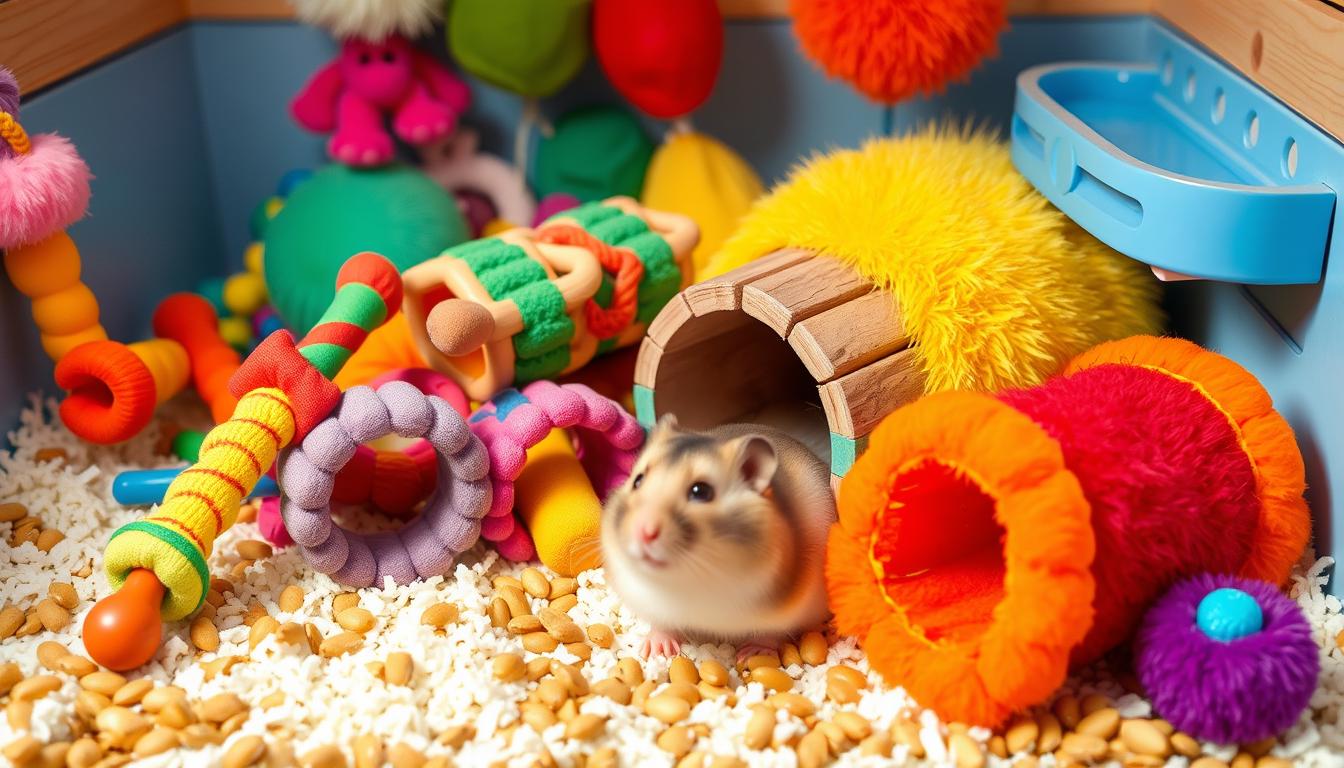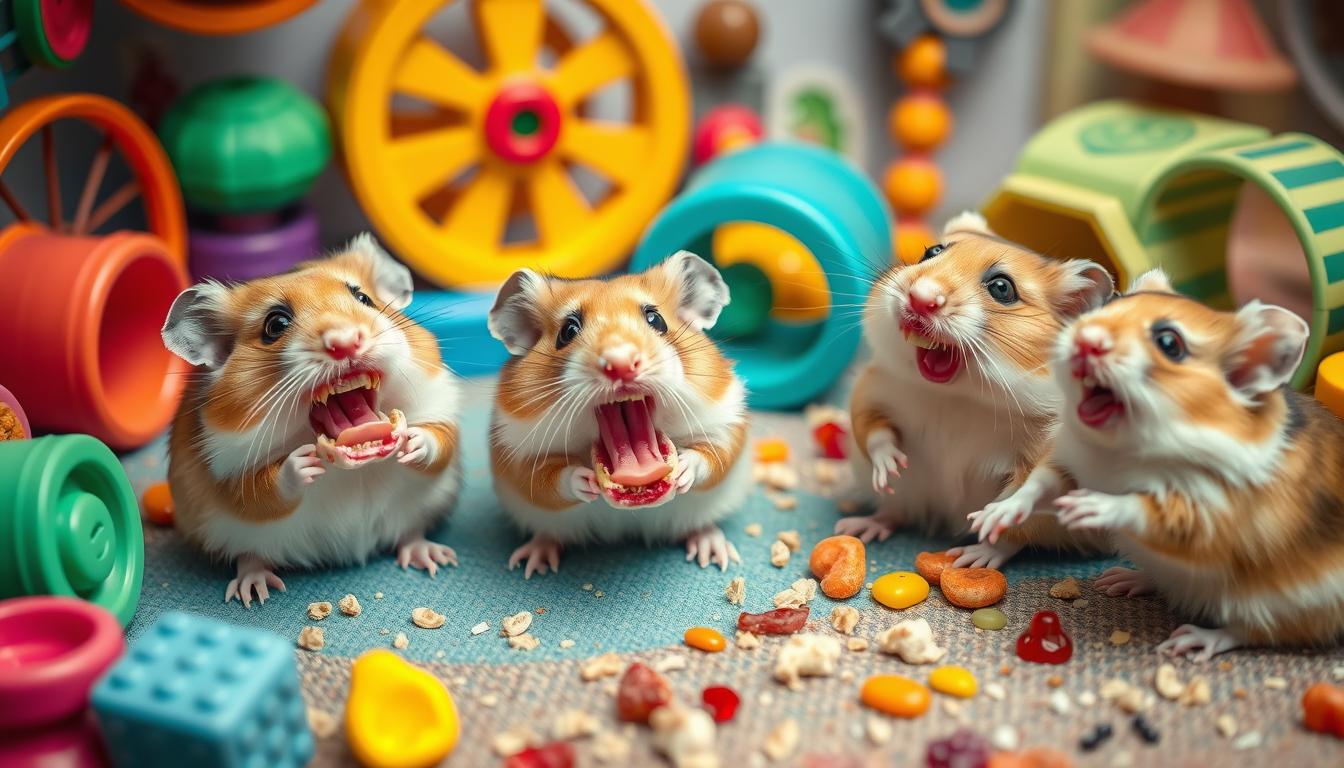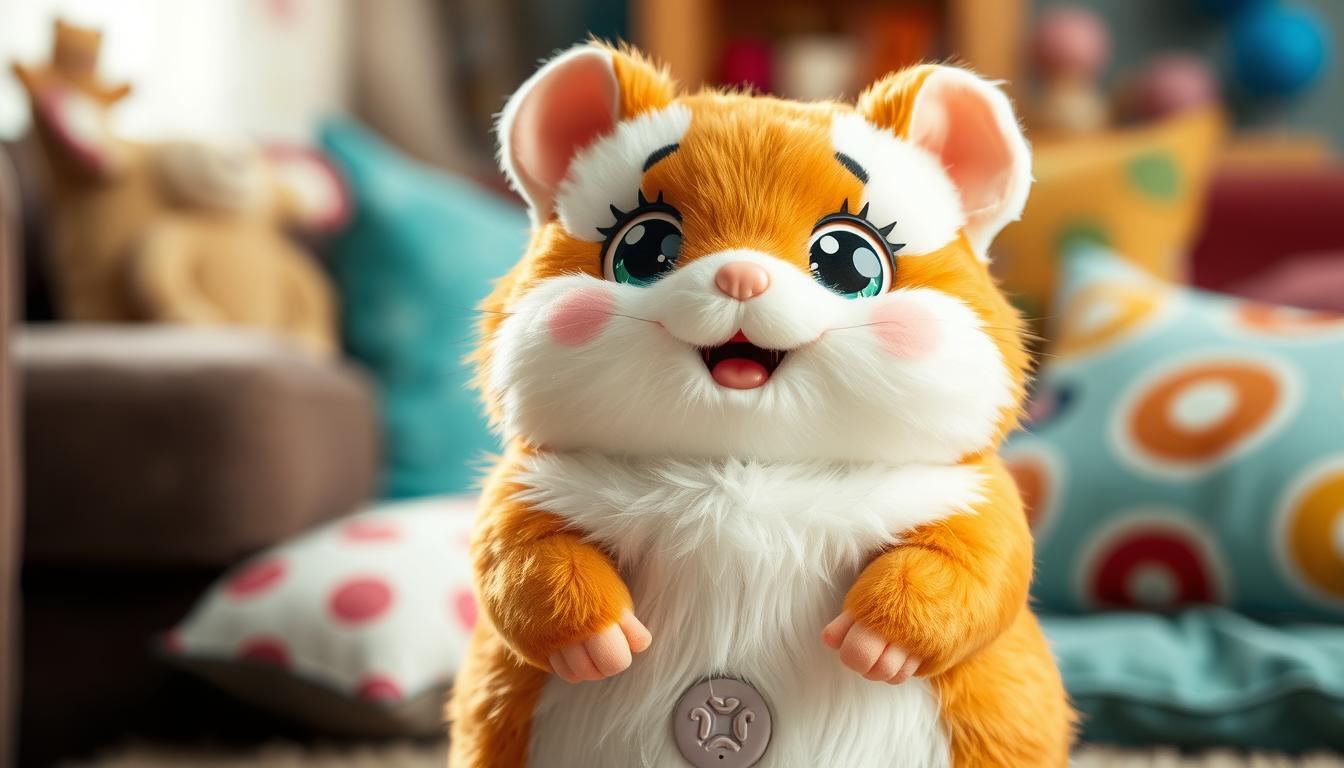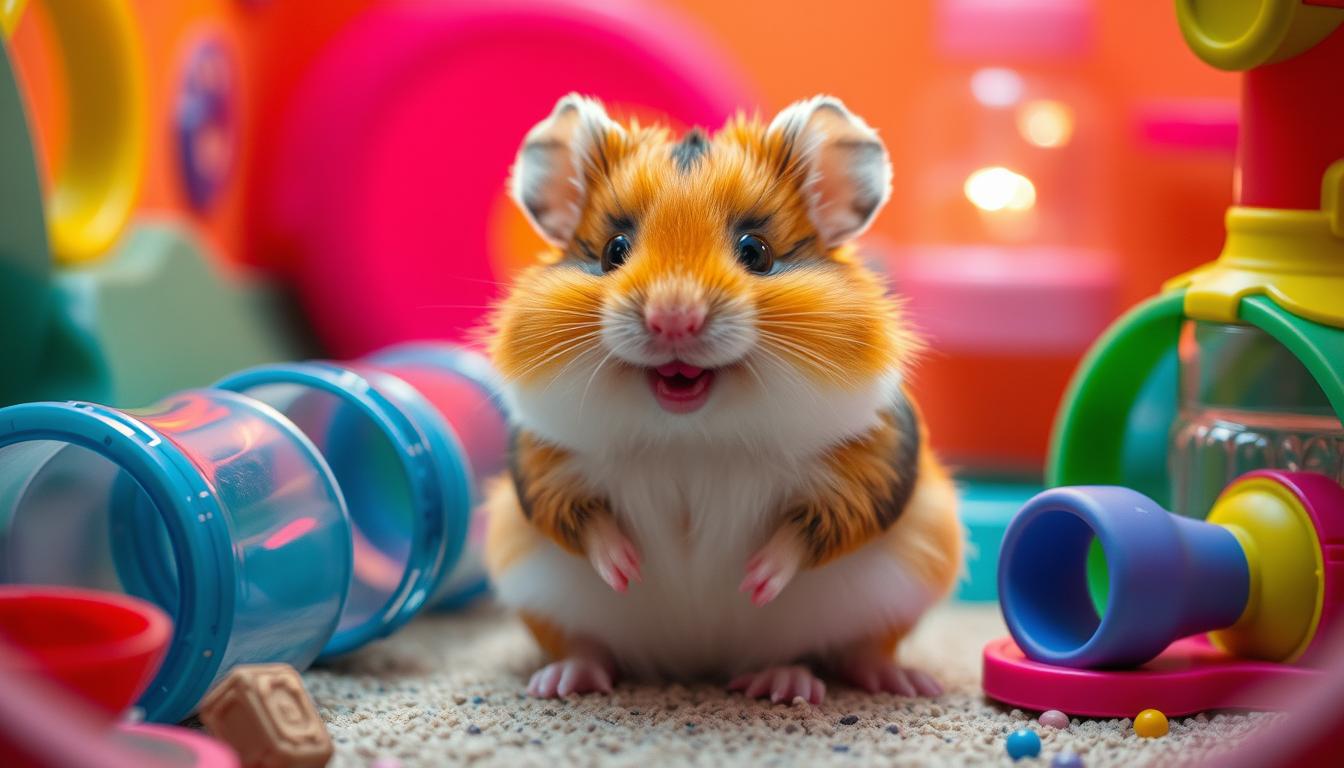Looking back at hamster toys from the 2000s brings back happy memories. These toys, from chewables to interactive ones, made playtime special for our hamsters. But, which ones were safe and good for them? Find out how to pick the best hamster toys that are both fun and safe in this guide.
Key Takeaways
- Discover the importance of providing safe and engaging toys for your hamster’s physical and mental health.
- Explore the different types of hamster toys available, from chew toys to interactive playthings.
- Learn how to identify high-quality, safe materials and features when selecting toys for your hamster.
- Understand the factors to consider when choosing the right speaking hamster toy for your furry companion.
- Discover tips for maintaining and cleaning your hamster’s toys to ensure their longevity and safety.
Importance of Using Toys for Hamsters
Playtime is key for hamsters, offering physical and mental benefits. Toys let them explore, burrow, and chew, keeping them happy and healthy. In the 2000s, new toys made their lives more exciting and active.
Benefits of Playtime for Hamsters
Playtime with toys is great for hamsters. It keeps them active, preventing obesity and keeping muscles strong. It also keeps their minds sharp, reducing boredom and stress.
Enhancing Your Hamster’s Mental Health
Choosing the right toys is vital for your hamster’s mind. Toys that spark curiosity, like tunnels and mazes, prevent depression. Chew toys help keep their teeth healthy, a must for their well-being.
In the 2000s, the need for mental stimulation in hamsters grew. By using the right toys, you can make your hamster happy and healthy.
Types of Hamster Toys Available
The 2000s brought a new wave of hamster toys. These included everything from chew toys to interactive hamster toys. Pet owners could choose from a wide range to match their hamsters’ personalities and needs.
Chew Toys vs. Interactive Toys
Chew toys, like wooden blocks and hay items, were still popular. They helped hamsters gnaw and keep their teeth in check. Interactive toys, such as tunnels and mazes, became more popular. They offered mental challenges and encouraged hamsters to stay active.
Options for Different Hamster Breeds
- Dwarf hamsters loved small, complex habitats with tunnels and hiding spots.
- Syrian (Golden) hamsters needed bigger spaces with lots of room for running and toys.
- Toy makers offered a wide range of 2000s hamster toy varieties to meet these needs.
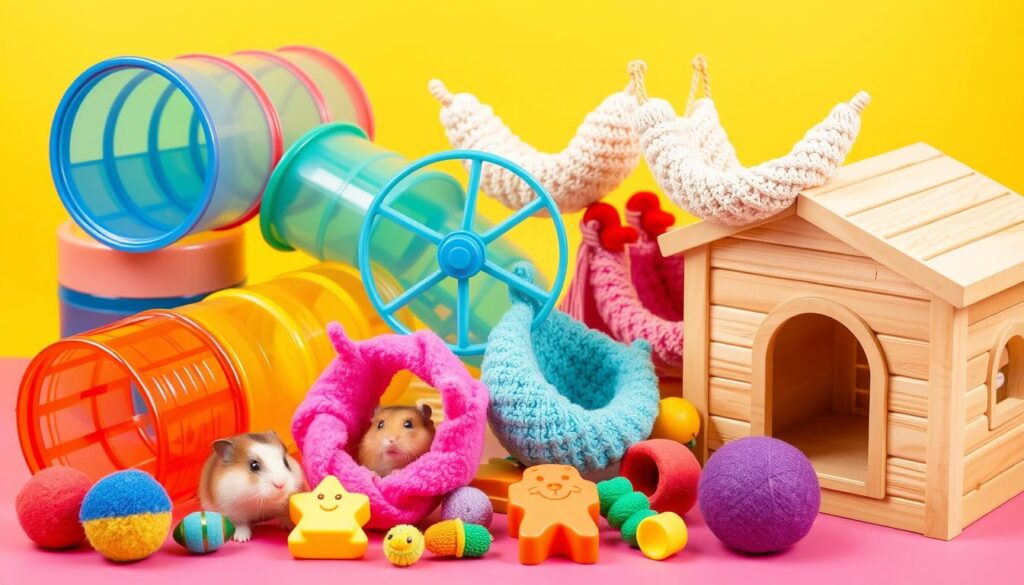
“The right toys are key for a hamster’s health. The 2000s saw a big leap in understanding what hamsters need.”
Features to Look For in a Speaking Hamster Toy
Choosing the right speaking hamster toy is key to keeping your pet safe and happy. Looking back at the 2000s, we see important materials and construction methods. These ensure a fun and safe playtime for your hamster.
Safety Materials and Construction
In the early 2000s, hamster toy safety standards were improving. Makers used safe hamster toy materials like untreated wood and durable plastics. These materials were non-toxic and made the toys engaging.
The toys were built with smooth edges and secure parts. This design prevented any harm to your hamster.
Size and Weight Considerations
The speaking hamster toy features from the 2000s considered hamster size and weight. Toys were made to fit comfortably, no matter the hamster’s size. They were also light enough for hamsters to easily play with.
Knowing what made safe and fun hamster toys in the 2000s helps you choose better. Focus on 2000s toy safety standards for a happy and enriching environment for your hamster.
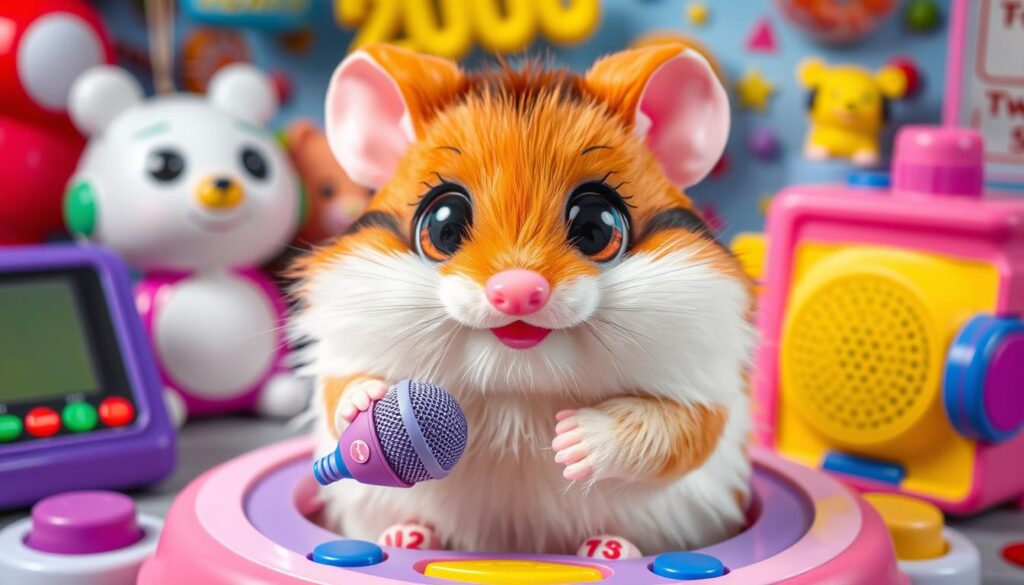
“Providing your hamster with the right toys is essential for their physical and mental well-being. Look for features that prioritize safety and encourage natural behaviors.”
Choosing the Right Speaking Hamster Toy
Exploring 2000s speaking hamster toys is fun. But, picking the right one for your pet is key. Think about safety, brand reputation, and more. These will help you find the perfect toy for your hamster.
Factors to Consider Before Buying
- Safety and Materials: Choose toys that are safe and non-toxic. Make sure they don’t have small parts or sharp edges.
- Size and Weight: Pick a toy that fits your hamster’s size and age. It should be big enough for them to play without feeling cramped.
- Sound Quality: Look for toys with clear, high-quality sounds. They should sound like your hamster’s real voice.
- Durability: Find a toy that can handle your hamster’s chewing. It should last a long time.
- Ease of Cleaning: Choose a toy that’s easy to clean. This keeps your pet’s environment clean and safe.
Popular Brands on the Market
In the early 2000s, many brands became popular for their speaking hamster toys. Some top names include:
| Brand | Known for | Key Features |
|---|---|---|
| Chatty Hamsters | Realistic sound recordings | Durable construction, diverse sound options |
| Speak-a-Lot Pets | Educational and entertaining toys | Variety of dialogue, interactive design |
| Hamster Harmony | High-quality materials and safety | Chew-resistant components, customizable features |
By thinking about these points and looking at popular brands, you can find the best toy. It will make your hamster happy and strengthen your bond.
How to Maintain and Clean Your Hamster’s Toys
Keeping your hamster’s toys clean is key for their health. Whether they’re old or new, regular hamster toy maintenance and cleaning of 2000s hamster toys is vital. It helps keep your pet safe and happy.
Regular Cleaning Tips
Here are some easy steps to clean your hamster’s toys:
- Use a damp cloth and mild soap to clean hard toys. Make sure the soap is safe for pets.
- For soft or wooden toys, a soft-bristled brush and gentle soap can help. This removes dirt and smells.
- After cleaning, rinse toys well with water. This gets rid of any soap left behind.
- Let toys dry completely before giving them back to your hamster. This stops any moisture problems.
Signs Your Toy Needs Replacement
Even with good care, toys may need to be replaced. Look out for these toy replacement indicators:
- Wear and tear, like cracks or frays, can be a sign it’s time for a new toy.
- Loose parts can be a choking hazard. If a toy is falling apart, it’s time for a new one.
- Odors or stains that won’t go away mean it’s time for a fresh toy.
- If your hamster stops playing with a toy, it might be a sign it’s time for something new.
By watching for these signs and cleaning regularly, your hamster’s toys will stay safe and fun for a long time.
Encouraging Your Hamster to Use Toys
Engaging your hamster with toys is key to their happiness and health. In the 2000s, pet owners found many ways to keep their hamsters entertained. By knowing what your hamster likes, you can make their playtime fun and active.
Techniques to Engage Your Hamster
Using different textures and materials in toys was a big hit in the 2000s. Toys made from wood, cardboard, or hay let hamsters chew naturally. Puzzles and mazes also helped them solve problems. Plus, hiding treats in toys made playtime even more exciting.
Understanding Your Hamster’s Behavior
Knowing your hamster’s personality is crucial for fun playtime. Some hamsters love to explore, while others are more careful. By watching how your hamster reacts, you can make playtime just right for them.

